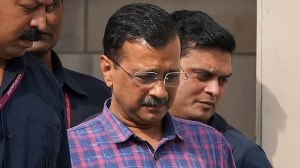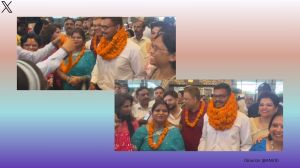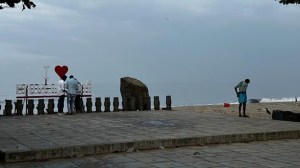- India
- International
Rules of confidence
Following the withdrawal of support by the four Left parties to the UPA government, the prime minister has communicated to the president that he would seek a “trust vote...

Following the withdrawal of support by the four Left parties to the UPA government, the prime minister has communicated to the president that he would seek a “trust vote” (sometimes also called a confidence motion) in Parliament.
The Constitution does not mention either a confidence motion or a no-confidence motion. Article 75 does specify that the council of ministers shall be collectively responsible to the House of the People. This implies that the majority of Lok Sabha MPs must not be against the prime minister and his cabinet. In 1991, Narasimha Rao formed a minority government and later scraped together majority support.
Article 118 of the Constitution permits each house of Parliament to make its own rules for conduct of business. Rule 198 of the Lok Sabha specifies the procedure for a motion of no-confidence. Any member may give a written notice; the speaker shall read the motion of no-confidence in the House and ask all those persons to rise who favour that the motion be taken up. If there are 50 MPs in favour, the speaker allots a date for discussing the motion. The first NDA government lost such a motion in 1999.
Confidence motions have evolved as a counter by the government when it wants to demonstrate its majority. There is no special provision in the rules for a confidence motion — such a motion is moved as an ordinary motion under Rule 184. In recent times, when no party has had a clear majority, the president has appointed a prime minister who he believed had the majority support. This person is expected to prove his majority through a confidence motion. For instance, in 1998, President Narayanan appointed Vajpayee as prime minister on the basis of written support by a majority of MPs but asked him to secure the confidence of Parliament in 10 days.
There have been two occasions when the prime minister has tabled a notice of a motion of confidence but resigned before it was moved (Charan Singh in 1979 and Vajpayee in 1996). V.P. Singh in 1989, Chandra Shekhar in 1990, Narasimha Rao in 1991 and 1993, Deve Gowda in 1996, Gujral in 1997 and Vajpayee in 1998 all won motions of confidence. V.P. Singh in 1990 and Deve Gowda in 1997 lost such motions.

What happens if both a motion for no-confidence and a motion for confidence are tabled? In 1990, when V.P. Singh had tabled a motion of confidence and a member had given notice of a no-confidence motion, the speaker had given precedence to government business and taken the motion of confidence.
What happens if the prime minister loses a motion of confidence? In such a case, he is obliged to resign, and the president should try to identify another person who enjoys the confidence of the Lok Sabha. Before the vote on the confidence motion, the prime minister may also recommend to the president that the House be dissolved; such a recommendation has to be followed. However, he cannot make such a recommendation after he loses the confidence motion.
When do governments propose motions of confidence? This is usually done in three scenarios. First, if there is doubt that the government has the support of the majority of MPs, usually after some MPs have withdrawn support — as in the current scenario. In that case, the prime minister may pro-actively seek such a vote to demonstrate that he has support and is empowered to take important strategic decisions — such as the nuclear deal. (Of course, this could be a risky strategy, as witnessed by V.P. Singh and Deve Gowda, but it pre-empts a no-confidence motion.) Second, the government may want to corner some critical MPs who may not wish to vote against it. (For example, will the Left parties vote with the BJP?) Third, it may decide to precipitate a crisis to ensure that all its allies, with possibly some divergent interests, band together.
The writer is head of research, PRS Legislative Research, Delhi
madhavan@prsindia.org
Must Read
Apr 23: Latest News
- 01
- 02
- 03
- 04
- 05




































